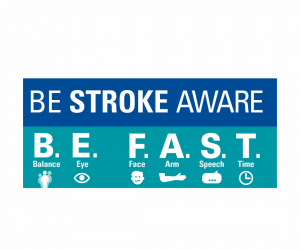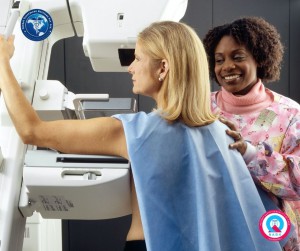A stroke is a medical emergency, and prompt treatment is very important. Early detection & action can reduce brain damage and other complications leading to permanent disability or uncommon death.
What is Stroke?
Stroke is a cerebrovascular disease. This means that it affects the blood vessels that feed the brain oxygen. If the brain does not receive enough oxygen, damage may start to occur.
A stroke occurs when the blood supply to part of your brain is interrupted or reduced, preventing brain tissue from getting oxygen and nutrients. Brain cells begin to die in minutes.
Although many strokes are treatable, some can lead to disability or death.
Remember “Be Fast” when you spot a stroke:
- Sudden Loss of Balance
- Loss of vision in one or both Eyes
- Face drooping
- Arm weakness
- Speech difficulty
- Time to call medical emergency
Risk factors:
Risk factors for narrowed blood vessels in the brain are the same as those that cause narrowing blood vessels in the heart and heart attack these includes:
- High blood pressure/Hypertension
- High cholesterol
- Diabetes & Smoking
Symptoms:
The sooner a person having a stroke gets care, the better their outcome is likely to be. For this reason, it’s helpful to know the signs of a stroke so you can act quickly. Stroke symptoms can include:
- Confusion, including difficulty speaking and understanding speech
- A Head ache, possibly with altered consciousness or vomiting
- Numbness or an inability to move parts of the face, arm, or leg, particularly on one side of the body
- Vision problems in one or both eyes
- Difficulty walking, including dizziness and a lack of coordination.
What are the different types of strokes?
There are three main types of stroke:
- transient ischemic attack
- ischemic stroke
- hemorrhagic stroke.
Transient ischemic attack (TIA):
Doctors also call a transient ischemic attack (TIA) a warning or ministroke. Anything that temporarily blocks blood flow to your brain causes a TIA. The blood clot and TIA symptoms last for a short period of time.
Ischemic stroke
An ischemic stroke occurs when a blood clot keeps blood from flowing to your brain. The blood clot is often due to atherosclerosis, which is a buildup of fatty deposits on the inner lining of a blood vessel. A portion of these fatty deposits can break off and block blood flow in your brain. The concept is similar to that of a heart attack, where a blood clot blocks blood flow to a portion of your heart.
An ischemic stroke can be embolic, meaning the blood clot travels from another part of your body to your brain. An estimated 15 percent of embolic strokes are due to a condition called atrial fibrillation, where your heart beats irregularly.
A thrombotic stroke is an ischemic stroke caused by a clot forming in a blood vessel in your brain.
Unlike a TIA, the blood clot that causes an ischemic stroke won’t go away without treatment.
Hemorrhagic stroke
A hemorrhagic stroke results when a blood vessel in your brain ruptures or breaks, spilling blood into the surrounding tissues.
There are three main types of hemorrhagic strokes: The first is an aneurysm, which causes a portion of the weakened blood vessel to balloon outward and sometimes rupture. The other is an arteriovenous malformation, which involves abnormally formed blood vessels. If such a blood vessel ruptures, it can cause a hemorrhagic stroke. Lastly, very high blood pressure can cause weakening of the small blood vessels in the brain and result in bleeding into the brain as well.
Your doctor will ask you or a family member about your symptoms and what you were doing when they arose. They’ll take your medical history to find out your stroke risk factors. They’ll also:
- ask what medications you take
- check your blood pressure
- listen to your heart
You’ll also have a physical exam, during which the doctor will evaluate you for:
- balance
- coordination
- weakness
- numbness in your arms, face, or legs
- signs of confusion
- vision issues.
Treatment:
Proper medical evaluation and prompt treatment are vital to recovering from a stroke.
You may go through various tests to further help your doctor determine if you’ve had a stroke, or to rule out another condition. These tests include:
Blood tests
Your doctor might draw blood for several blood tests. Blood tests can determine:
- your blood sugar levels
- if you have an infection
- your platelet levels
- how fast your blood clots
MRI and CT scan
You may undergo either or both a magnetic resonance imaging (MRI) scan and a computerized tomography (CT) scan.
The MRI will help see if any brain tissue or brain cells have been damaged. A CT scan will provide a detailed and clear picture of your brain that shows any bleeding or damage in the brain. It may also show other brain conditions that could be causing your symptoms.
EKG
Your doctor may order an electrocardiogram (EKG), too. This simple test records the electrical activity in the heart, measuring its rhythm and recording how fast it beats. It can determine if you have any heart conditions that may have led to stroke, such as a prior heart attack or atrial fibrillation.
Cerebral angiogram
Another test your doctor may order to determine if you’ve had a stroke is a cerebral angiogram. This offers a detailed look at the arteries in your neck and brain. The test can show blockages or clots that may have caused symptoms.
Carotid ultrasound
A carotid ultrasound, also called a carotid duplex scan, can show fatty deposits (plaque) in your carotid arteries, which supply the blood to your face, neck, and brain. It can also show whether your carotid arteries have been narrowed or blocked.
Echocardiogram
An echocardiogram can find sources of clots in your heart. These clots may have traveled to your brain and caused a stroke.
These stroke types are caused by a blood clot or other blockage in the brain. For that reason, they’re largely treated with similar techniques, which include:
Antiplatelet and anticoagulants
Over-the-counter aspirin is often a first line of defense against stroke damage. Anticoagulant and antiplatelet drugs should be taken within 24 to 48 hours after stroke symptoms begin.
Clot-breaking drugs
Thrombolytic drugs can break up blood clots in your brain’s arteries, which still stop the stroke and reduce damage to the brain.
One such drug, tissue plasminogen activator (tPA), or Alteplase IV r-tPA, is considered the gold standard in ischemic stroke treatment. It works by dissolving blood clots quickly, if delivered within the first 3 to 4.5 hours after symptoms of your stroke began. People who receive a tPA injection are more likely to recover from a stroke, and less likely to have any lasting disability as a result of the stroke.
Mechanical thrombectomy
During this procedure, the doctor inserts a catheter into a large blood vessel inside your head. They then use a device to pull the clot out of the vessel. This surgery is most successful if it’s performed 6 to 24 hours after the stroke begins.
Stents
If your doctor finds where artery walls have weakened, they may perform a procedure to inflate the narrowed artery and support the walls of the artery with a stent.
Surgery
In the rare instances that other treatments don’t work, your doctor may perform surgery to remove a blood clot and plaques from your arteries. This may be done with a catheter, or if the clot is especially large, your doctor may open an artery to remove the blockage.
Hemorrhagic stroke
Strokes caused by bleeds or leaks in the brain require different treatment strategies. Treatments for hemorrhagic stroke include:
Medications
Unlike with an ischemic stroke, if you’re having a hemorrhagic stroke, the treatment goal is to make your blood clot. Therefore, you may be given medication to counteract any blood thinners you take.
You may also be prescribed drugs that can reduce blood pressure, lower the pressure in your brain, prevent seizures, and prevent blood vessel constriction.
Coiling
During this procedure, your doctor guides a long tube to the area of hemorrhage or weakened blood vessel. They then install a coil-like device in the area where the artery wall is weak. This blocks blood flow to the area, reducing bleeding.
Clamping
During imaging tests, your doctor may discover an aneurysm that hasn’t started bleeding yet or has stopped. To prevent additional bleeding, a surgeon may place a tiny clamp at the base of the aneurysm. This cuts off blood supply and prevents a possible broken blood vessel or new bleeding.
Surgery
If your doctor sees that an aneurysm has burst, they may do surgery to clip the aneurysm and prevent additional bleeding. Likewise, a craniotomy may be needed to relieve the pressure on the brain after a large stroke.
Recovery And Rehabilitation:
It’s important that recovery and rehabilitation from a stroke start as soon as possible. In fact, stroke recovery should begin in the hospital. There, a care team can stabilize your condition, assess the effects of the stroke, identify underlying factors, and begin therapy to help you regain some of your affected skills.
Stroke recovery focuses on four main areas:
Speech therapy
A stroke can cause speech and language impairment. A speech and language therapist will work with you to relearn how to speak. Or, if you find verbal communication difficult after a stroke, they’ll help you find new ways of communication.
Cognitive therapy
After a stroke, many survivors have changes to their thinking and reasoning skills. This can cause behavioral and mood changes. An occupational therapist can help you work to regain your former patterns of thinking and behavior and to control your emotional responses.
Relearning sensory skills
If the part of your brain that relays sensory signals is affected during the stroke, you may find that your senses are “dulled” or no longer working. That may mean that you don’t feel things well, such as temperature, pressure, or pain. A therapist can help you learn to adjust to this lack of sensation.
Physical therapy
Muscle tone and strength may be weakened by a stroke, and you may find you’re unable to move your body as well as you could before. A physical therapist will work with you to regain your strength and balance, and find ways to adjust to any limitations.
Rehabilitation may take place in a rehabilitation clinic, a skilled nursing home, or your own home.
Preventive Measures:
In addition to emergency treatment,Recovery and Rehab healthcare providers will also advise you on ways to prevent future strokes.
- Quit smoking.
- Consume alcohol in moderation.
- Keep weight in check
- Regular Checkups
Taking all these measures will help put you in better shape to prevent stroke.
Conclusion/ Take away
If you suspect or experiencing symptoms of a stroke, it’s crucial you seek emergency medical treatment. Clot-busting medication can only be provided in the first hours after the signs of a stroke begin, (i.e, first 3hrs- 4.5hrs are said to be golden period) and early treatment is one of the most effective ways to reduce your risk for long-term complications and disability.
Prevention is possible, whether you’re preventing a first stroke or trying to prevent a second. Medications can help reduce the risk of blood clots, which lead to strokes. Speakup with your doctor to find a prevention strategy that works for you, including medical intervention and lifestyle changes.

